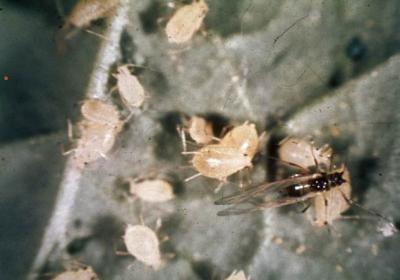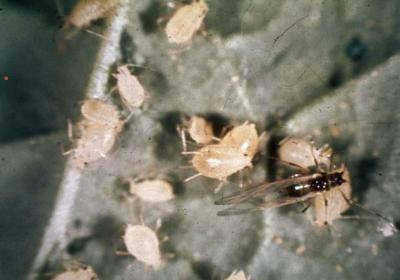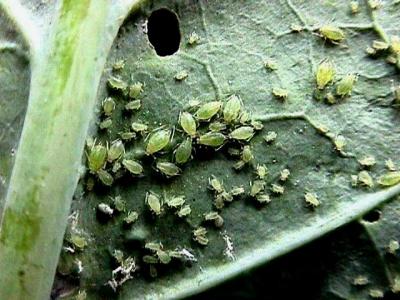


Main aphids in Africa: Black bean aphid ([i]Aphis fabae[/i]), Cabbage aphid ([i]Brevycoryne brassicae/Myzus persicae[/i]), Groundnut aphid ([i]A.craccivora[/i]), Cotton aphid ([i]A.gossypii[/i]), Russian wheat aphid ([i]Diuraphis noxia[/i]), Cypress aphid ([i]Cinara cupressi[/i])
Cotton aphid (Aphis gossypii) and green peach aphid (Myzus persicae)
These are the most important aphids in papaya growing. These insects suck sap from young leaves and flowers and may weaken the plants. However, this type of damage is usually of little importance. Their importance as pests is mainly due to their ability to transmit virus diseases, for instance the papaya ring spot virus and the papaya mosaic virus. Few aphids are enough to transmit mosaic virus. These aphids are also found on other crops such as cucurbits, potatoes and tobacco.
- Avoid planting these crops near papaya fields.
- Removing alternative hosts and the presence of natural predators can effectively reduce aphid populations.
- Monitoring and control of aphids in the nursery is important.
